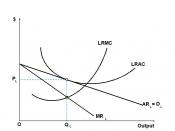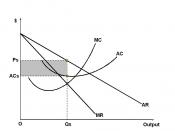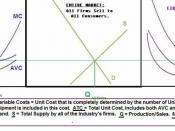"The primary debate among economists is not about using markets but about how markets are structured" (Colander, 2008). The structure of a market is comprised by the number of organizations in said market, the barriers to entry to said market, and the interdependence among organizations in how they achieve their goals of maximizing profits. By analyzing the differences of the market structures in the ECON365 week four simulation, the effectiveness of BP's market structure, and how the organizations in each market structure maximize profits, the reader should be able to grasp a firm concept on the differences between the four market structures-perfect competition, a monopoly, monopolistic competition, and an oligopoly.
Supply and Demand in SimulationThe Supply and Demand simulation uses the fictional East-West Transportation Company to "describe the differences between market structures a freight transportation industry faces in various markets"(University of Phoenix, 2008). The East-West Transportation Company is divided into four divisions; Consumer Goods, Coal, Chemicals, and Forest Products.
First ScenarioIn the first scenario the user must decide whether or not the Consumer Goods Division should shut down or continue operations because of lost profits to monopolistic competition. Choosing to continue operations and lowering the number of hundred weight shipments per million to 6.75 resulted in a minimized lost profit of$150.03 million, which is the point where MR=MC. This scenario identifies with a perfectly competitive market.
Second ScenarioThe second scenario begins with announcing the Coal Division's monopoly in the region after its only competitor pulled out. The scenario asks the user to set the price and output of coal. The maximized profit realized for coal was at $7.85 million per short ton. This is also where MR=MC.
Third ScenarioThe third scenario revolves around the Chemical Division, which is operating in a oligopolistic market. The industry is fixed, and...


